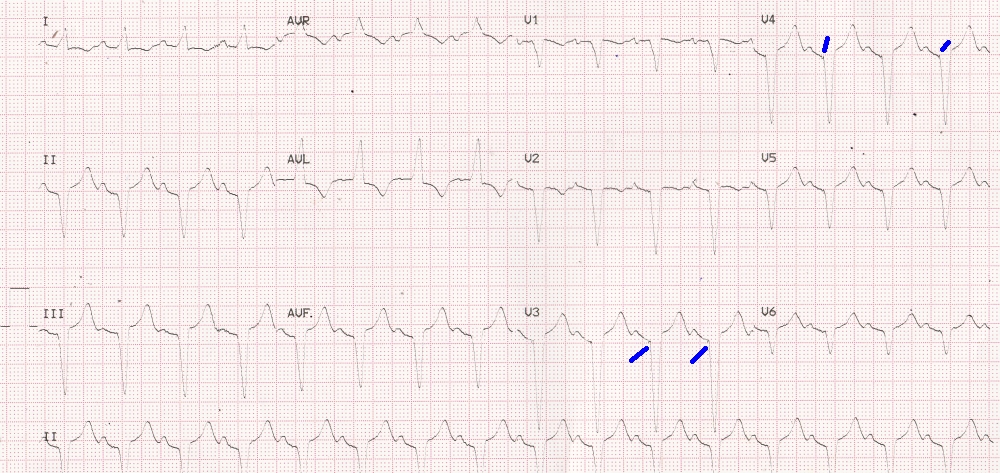AV sequential pacing (tracking)
AV sequential pacing (tracking)

At a glance this will seem to be a simple LBBB (left bundle branch block. But the QRS complexes are negative in V5, V6 unlike in a usual LBBB. It is actually AV sequential pacing (tracking). A close scrutiny will reveal the small pacing spikes just before the QRS complexes. They are small because high frequency pacing spikes get filtered off by the low pass filter of the digital ECG machine. Hence pacing spikes especially the small pacing spikes of bipolar pacing are ‘ironed out’ by digital ECG filters. If the low pass filters are removed and an upper frequency limit set at 100 Hz, the pacing spikes can be seen well. In case of modern digital cardiac monitors, there is an option to detect pacing spikes, which if enabled, will enhance the pacing spikes very much so that they are easily visible.
In this ECG, each P wave is followed by a PR interval terminating in a pacing spike and QRS complex. This shows that the pacemaker ventricular pacing is ‘tracking’ the P waves. This requires either an atrial lead as in dual chamber pacing or an atrial sensing electrode as in the case of a single lead VDD pacemaker.
The discordance between the QRS patterns in lead I, aVL vs V5, V6 should make one suspect a pacemaker rhythm and not a simple LBBB pattern. In simple LBBB pattern, there is concordance between the lateral limb leads and chest leads.
Left axis deviation (negative QRS complexes in inferior leads) indicates pacing from the right ventricular apex so that ventricular activation proceeds from below upwards, away from the inferior leads.
